The History of Rubik's Cube Hardware
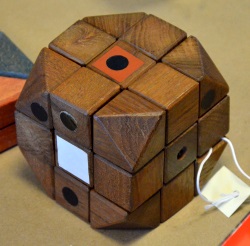 The 3x3 Rubik’s cube, originally known as the Magic Cube, has had many improvements and advancements, most notably in the extremely competitive field of hardware. There have been many advancements in solving methods and software, such as CubeExplorer and CSTimer, but these are less notable and easy to see.
The 3x3 Rubik’s cube, originally known as the Magic Cube, has had many improvements and advancements, most notably in the extremely competitive field of hardware. There have been many advancements in solving methods and software, such as CubeExplorer and CSTimer, but these are less notable and easy to see.
The Original Hardware
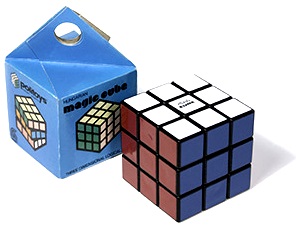 The very first cube was wood and turned horribly. The layers had to be completely aligned, otherwise the cube wouldn’t turn at all.
The very first cube was wood and turned horribly. The layers had to be completely aligned, otherwise the cube wouldn’t turn at all.
Then came the factory produced plastic cubes. These had much the same limitations as before, except they were supposedly much harder to take apart than the earlier wooden ones. I have one of these early factory produced ones, and it is very easy to take apart, so I can't imagine how easy that first wooden one would have been to take apart. These new factory produced ones were sold worldwide, and the craze soon enveloped the world. Then, after the 1982 World Championships, where the plastic factory produced cubes were used, the craze died down.
First Gen Speedcubes
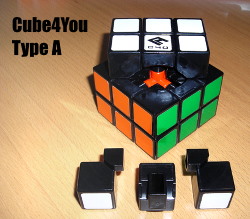 It was then brought back in strength in the early 2000's, and Rubik's started attempting to revolutionize their products. They didn't do very well, because Chinese companies made DIY kits, which eventually evolved into pre-built cubes. They were sold by Cube4You, which named them in quite a boring fashion: Type A, Type B, Type C, Type D, Type E and Type F. These are made by 5 different companies, GuoJia, ShengEn, WitEden, DianSheng and YongJun (YJ). YJ and WitEden are still active today, with YJ being known for its big cubes, and WitEden for its odd shaped ones, such as the 2x2x5, the 2x3x4 camouflage and more.
It was then brought back in strength in the early 2000's, and Rubik's started attempting to revolutionize their products. They didn't do very well, because Chinese companies made DIY kits, which eventually evolved into pre-built cubes. They were sold by Cube4You, which named them in quite a boring fashion: Type A, Type B, Type C, Type D, Type E and Type F. These are made by 5 different companies, GuoJia, ShengEn, WitEden, DianSheng and YongJun (YJ). YJ and WitEden are still active today, with YJ being known for its big cubes, and WitEden for its odd shaped ones, such as the 2x2x5, the 2x3x4 camouflage and more.
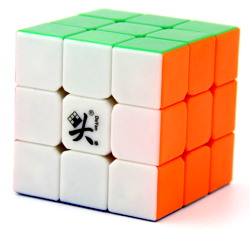
DaYan Guhong V1
Second Gen Speedcubes
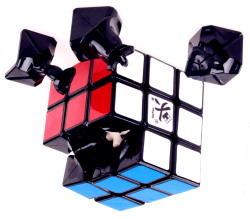
DaYan Zhanchi torpedoes
However, the Zhanchi's reign ended in 2013, when Moyu, which used to be a sub-brand of YJ, released the Weilong.
In 2016 everything changed. TheCubicle.us (now TheCubicle.com) made the first magnetic cube, the Weilong GTS M. This, like the DaYan Zhanchi, was one of the most revolutionary collections and applications of ideas in cubing. The cube was made by Chris Tran, for the Cubicle Labs, and it very quickly became so popular that he started putting magnets in more cubes. These included the Fangshi Shuangren, one of the really good early cubes. It is impossible to overstate how important this was. Of course, it couldn't go long unnoticed. Gan released the first factory magnetised cube, the Gan 356 Air UM, in January 2017. It was a collaboration with Cubicle Labs. Today, factory magnetised cubes are the standard, with only extremely budget cubes not having them. However, it is becoming rarer and rarer to find a non-magnetic cube, even amongst $10 and under cubes. In fact, the original Yuxin Little Magic (or YLM for short) is one of the only non magnetic 3x3's and a magnetic version of that was released earlier this year.
Gan's factory magnetised cube was soon facing fierce competition from Moyu and Qiyi, to name two.
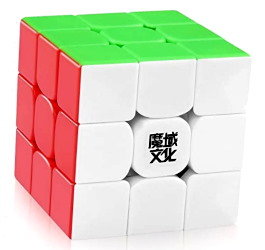
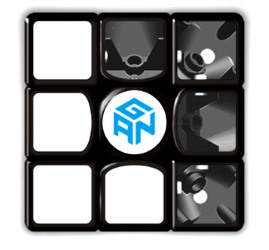
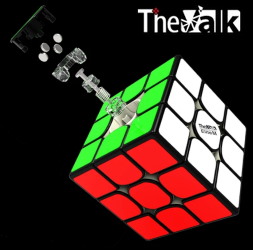
Weilong GTS M (first magnetic cube), Gan 356 Air UM (first factory magnetised cube), The Valk 3 Elite M (with center-edge magnets)
Magnets and cornercutting have been the focus of almost all upgrades to existing cubes, or new cubes, since 2016. The Valk 3 Elite M had center-edge magnets, whereas the usual is corner-edge. These center-edge magnets were a good idea from Qiyi, and would probably have become standard if they didn't make turning so heavy. Gan introduced interchangeable corner-edge magnet capsules in the Gan X. These just slid out and a different strength capsule could be slid in, unlike the much older magnetic cubes, which had the magnets fixed in, such as the Gan Air SM. The other "innovation" from Gan was the GES nuts, which allowed much more precise adjustments than the standard screw adjustment system. These are different coloured plastic nuts that screw onto the metal poles which come out of each centre, and they have different springs. Different forces are required to push down each spring. The latest GES nuts, the GES Pro, which I believe come only with the Gan 11M Pro, have many more features and even no tool tensioning, whereas the initial GES had a special tool.
The Final Generation
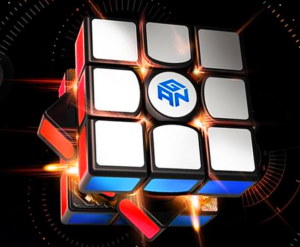
GAN 11 M Pro with corner-core magnets
This section will look at what I and many others believe will be the final big jump in hardware. With the release of the Gan 11M Pro came corner-core magnets. These are amazing, especially with its weight. Gan has cut down on weight, leading to a very light cube. The corner-core magnets counteract this and ensure that turning is not uncontrollable. When coupled with the GES Pro and the easy to adjust corner-edge magnets, I cannot foresee another advancement necessary. However, if there were to be further advancements, as I am sure there will be, I will say the same thing. Some possible advancements that might be made include further weight reduction and some grip adjustments that are not cancelled, as the 11M Pro's were.
Smart Cubes
I feel like this would not be complete without a mention of smart cubes. These are 3x3 cubes with circuitry and gyroscopes that detect turns and translate them to the picture on screen, which by means of Bluetooth connects to an app. These allow competitions to be held entirely in the app, as the 2020 Red Bull Rubik's Cube World Cup was. They also allow online racing and robot scrambling, as seen in the recent Gan i and Gan Robot pairing. Some notable smart cubes include the Giiker, the Rubik's Connected, ironically the best cube that Rubik's has made in my opinion, and the Gan i as mentioned above.
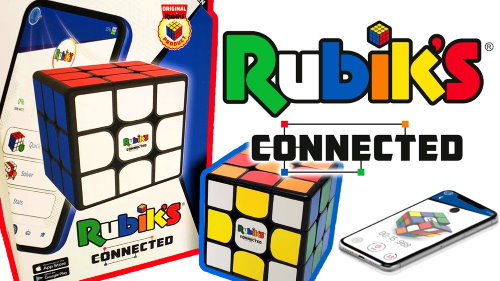
Article by J8Cubes
